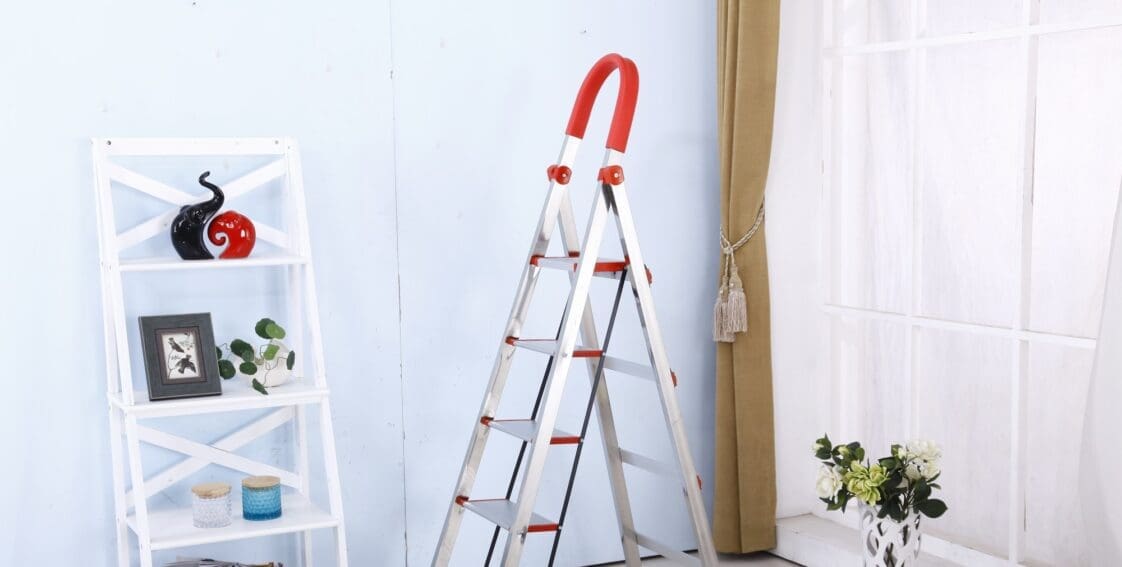
7 Crucial Ladder Safety Tips You Need to Know
Ladders are an essential tool for many tradespeople, but they can be dangerous if you don’t take the correct precautions. Ladder safety is critical to preventing accidents and injuries at work.
Each time you use a ladder, no matter what type of ladder it is or how tall it might be, ladder safety is key. We’ve compiled seven crucial ladder safety tips that will help keep your workplace safe! Read on to learn more.
1. Choose the Right Type of Ladder
Choosing the right kind of ladder for each project is the first essential step. Improperly using an appropriate ladder can be dangerous and lead to accidents, injuries, and even death. Ladder safety is especially crucial when working at heights above ground level.
Consider these four factors when choosing the right type of safe ladder for your project:
- Size and weight
- The height of the work surface above where you’ll set up your ladder
- How much space will surround the base of your working platform? Will there be obstructions such as overhead wires or branches?
- Will your ladder need to lean against a wall?
There are many different kinds of ladders for various purposes, but the most common ladder types include step ladders, extension ladders, ladders made for working with a partner, and many more. For electrical work, use a fiberglass ladder.
2. Ladder Setup is Key
Ladder safety begins before you even use one. Make sure that when you set up a ladder for use, there are no obstructions surrounding its base and you only use it on a solid, level surface. In addition, make sure your ladder is the right size and weight to safely hold you and that it is in good condition before you get started.
Inspect the ladder for frayed or broken parts, corrosion, and any other damage that might make it unsafe to use. Also, remember to check that locks are secured on ladders that are adjustable or extendable. A step ladder must be fully open and the hinges must be locked.
3. Be Mindful of the Weather and Other Potential Hazards
If you need to go up a ladder in severe weather, have someone hold the ladder for you. In high winds, avoid using a ladder at all. Never use ladders on snow, ice, or if they are wet. Ladder accidents are very common in the rain or snow, so be sure to only use ladders under safe conditions.
In addition to the weather, be mindful of other potential hazards. If you need a ladder in an area where there are power lines or if your ladder will come into contact with live electrical wires, turn off the power before going up the ladder and stay away from any standing water that is near where you’ll be working.
Ladder accidents involving electricity can cause burns as well as serious injury or death so it’s important to take these precautions seriously. You should also plan ahead for traffic safety when using ladders on roadways by making sure someone else controls traffic.
This ensures no one drives past too closely while you’re on the ladder. Also, avoid placing yourself directly under telephone and cable lines which could break and fall causing injuries such as fractured bones.
4. Climb a Ladder the Right Way
Climbing a ladder may seem like common sense to most people, but there is actually a right and wrong way to do it. As you climb the ladder, keep three points of contact: both hands and one foot, or two feet and one hand. Face the ladder and keep your body anchored between the rails.
Avoid skipping steps while climbing up or down the ladder. Ladder rungs are there for a reason, and you should always use them as such. Leaning or climbing up or down sideways on the ladder can cause it to tip over.
5. Don’t Overreach
Avoid reaching beyond the rails. If you placed your ladder a bit too far to the left or right of your work area, you may be tempted to reach it by stretching your arm or leaning over the ladder’s side rails. Not a good idea!
If you overreach while on a ladder, it can tip over and send you tumbling down. To stay safe, climb down if you cannot reach your target area from a centered position. Make your way down then reposition your ladder.
6. Have Only One Person on the Ladder at All Times
If you ask a buddy to climb up behind you to hand you tools or materials might cause the ladder to buckle, sending one or both of you flying backward. A ladder should only have one person on it at a time, with the exception of ladders with two sides. These ladders are designed to support two people, one on each set of rungs.
Wear a belt, apron, or pouch to carry tools and materials. If you need to lift big, heavy, or awkward objects, pull them up using a rope and bucket.
7. Don’t Walk Underneath the Ladder
This may sound more like a silly superstition than a safe ladder tip, but it’s an essential safety tip to always follow. Walking underneath a ladder that someone is using exposes you to all sorts of risks. Falling objects or accidentally shifting the ladder and sending someone crashing down are a couple of potential risks.
Ladder rungs can be slippery and unstable. So you don’t want to stand under or too close to the ladder. To keep safe, stay within arm’s reach of the ladder while someone else is using it.
Essential Ladder Safety Tips
Whether you’re a professional or DIYer, it’s important to be aware of the risks that come with working on ladders. These seven must-have ladder safety tips will help keep you safe and on top of your game when climbing up ladders. If these pointers don’t do enough for you, have an expert review what else can be done to prevent accidents so your work is not jeopardized by unforeseen events.
We offer insurance policies designed specifically for people who are at risk while working above ground – including those using ladders! For more information about our coverage options contact us today.

